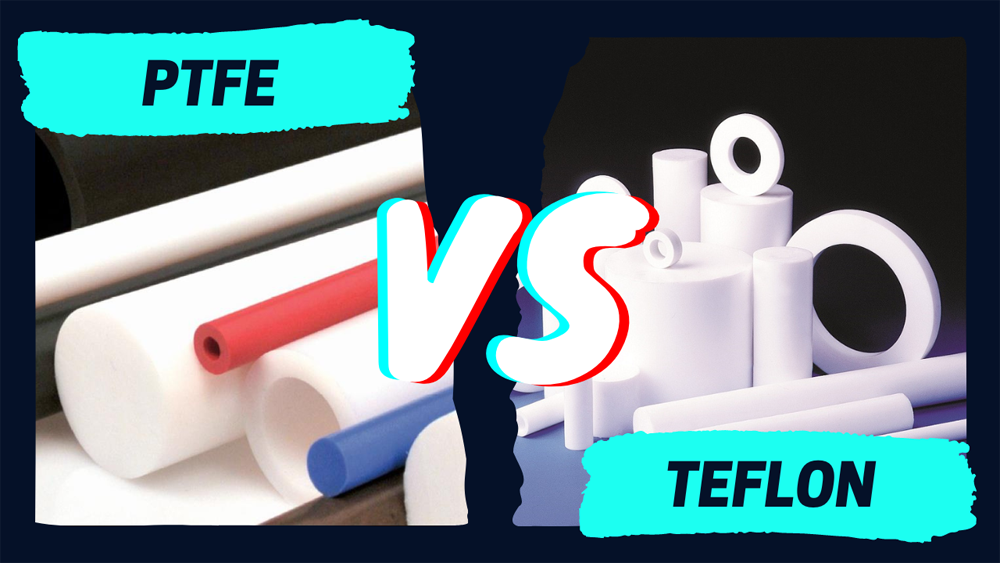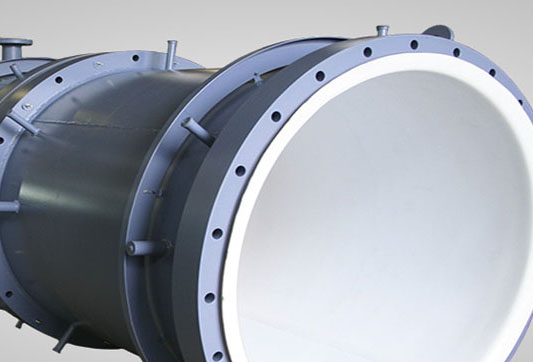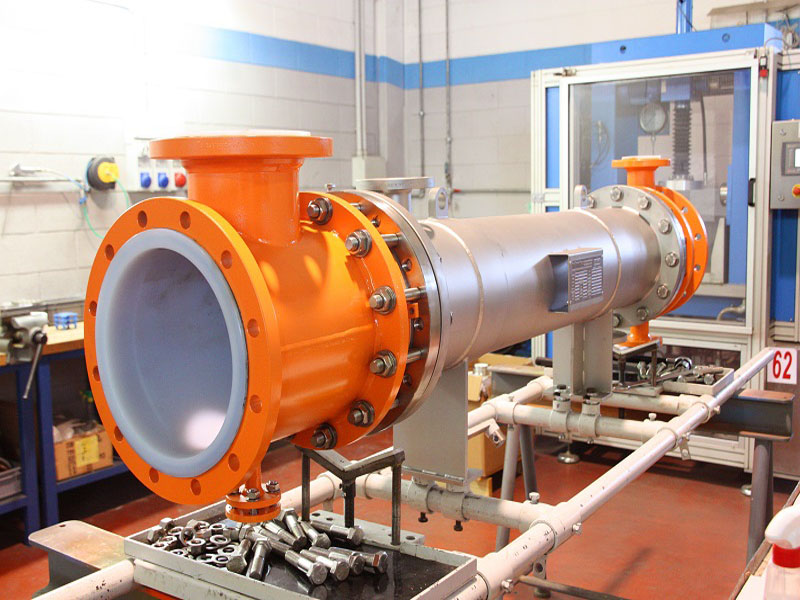
In the world of synthetic polymers, few names are as commonly recognized as Teflon. However, what many may not realize is that Teflon is not a unique material in itself, but a brand name for a specific type of polymer known as Polytetrafluoroethylene (PTFE). This common misunderstanding leads to confusion about the capabilities and applications of PTFE and Teflon-branded products. Understanding the distinction between these two is crucial, especially for industries that rely on the unique properties of these materials for applications ranging from non-stick cooking surfaces to high-grade industrial equipment. This article aims to clarify the differences between PTFE and Teflon, explore their applications, and dispel common misconceptions, ensuring that consumers and professionals alike make informed decisions based on accurate information.
Polytetrafluoroethylene, commonly abbreviated as PTFE, is a synthetic fluoropolymer of tetrafluoroethylene that has numerous applications due to its unique properties. PTFE is best known for its exceptional resistance to heat, being able to withstand temperatures up to 260 degrees Celsius (500 degrees Fahrenheit) without degradation. This high melting point makes it an ideal material for high-temperature environments.

PTFE is also renowned for its low friction and non-reactivity, which makes it a popular choice in the manufacture of items where a slippery surface is beneficial, such as non-stick cookware. Additionally, its chemical inertness allows it to resist almost all industrial chemicals and solvents, making it useful in chemical processing equipment.
The discovery of PTFE dates back to 1938 when Dr. Roy Plunkett, while attempting to develop a new refrigerant, accidentally polymerized tetrafluoroethylene into a white, waxy substance. This substance was later patented and marketed under the brand name Teflon by DuPont in the 1940s. PTFE's market potential was immediately recognized due to its unique set of properties, which were unmatched by any other material at the time.
Aside from cookware, PTFE is used in a variety of applications, including in aerospace for its ability to withstand extreme temperatures and in the medical field for its biocompatibility and inert nature. Its usage spans across different sectors, showcasing its versatility and indispensability in modern technology and industry.
Teflon is not a material itself but a brand name owned by Chemours (formerly part of DuPont), used to market a variety of products made from PTFE. Since its introduction in the 1940s, the name Teflon has become almost synonymous with non-stick, but its applications extend far beyond cookware.
Teflon coatings are celebrated for their ability to reduce friction and resist heat and chemical attack, properties inherited from the underlying PTFE. This makes Teflon-coated products ideal for a wide range of uses, from kitchen utensils and appliances to industrial machinery where a non-stick surface is crucial to prevent material build-up and ensure clean operation.
Beyond its use in cookware, Teflon is also employed in automotive parts, where its resistance to extreme temperatures and chemical stability improves the durability and performance of components. In the fashion industry, Teflon is used to make fabrics stain and water-resistant, showcasing its versatility.
The brand Teflon has grown to include other fluoropolymers developed by Chemours, including Teflon FEP (fluorinated ethylene propylene) and Teflon PFA (perfluoroalkoxy alkane), each with unique properties and applications. This expansion illustrates how Teflon has evolved from a single product to a family of materials that solve a broad range of challenges across multiple industries.
Although often used interchangeably in casual conversation, PTFE and Teflon refer to different aspects of the same material. PTFE is the chemical compound polytetrafluoroethylene, a synthetic polymer that is characterized by its waxy, non-reactive, non-stick properties, high melting point, and resistance to extreme temperatures and chemicals. It is one of the most versatile and widely used plastics known.
Teflon, on the other hand, is a brand name originally owned by DuPont (now Chemours) that covers a range of fluoropolymer products, with PTFE being the most famous among them. The Teflon brand encompasses more than just PTFE; it includes other types of fluoropolymers like FEP and PFA, each tailored for specific applications that require particular properties such as different melt flows or clarity.
The distinction is important, especially in technical and commercial contexts, because while all Teflon products contain PTFE or other types of fluoropolymers, not all PTFE products are Teflon branded. The Teflon brand has become so associated with non-stick coatings that it is often mistaken as a different material altogether rather than a brand of the material.
This confusion can affect purchasing decisions and application understandings, particularly when consumers are looking for products with specific characteristics attributed to PTFE or its derivatives. For example, in industries like aerospace and electronics, the specific properties of PTFE might be necessary, whereas Teflon-branded products could be preferred in culinary and textile applications for their recognized quality and performance.
| Feature | PTFE (Material) | Teflon (Brand) |
| Definition | A synthetic fluoropolymer of tetrafluoroethylene. | A brand name used for products made from PTFE and other fluoropolymers. |
| Properties | Non-reactive, non-stick, high melting point, resistance to extreme temperatures and chemicals. | Shares properties of PTFE; may include other fluoropolymers like FEP and PFA depending on the specific product. |
| Applications | Used in industries like aerospace, electronics, and medical fields due to its resistance and inert properties. | Popularly used in non-stick cookware, but also in automotive and textile industries for various performance enhancements. |
| Brand vs. Material | PTFE is the material itself and is not limited to any brand. | Teflon is a specific brand under Chemours that markets PTFE-based products. |
| Consumer Recognition | Less recognized by name; more known through its properties and technical applications. | Highly recognized brand, often associated directly with non-stick features in cookware. |
PTFE, given its high resistance to heat, chemicals, and electrical properties, is used extensively across various sectors. In the aerospace industry, it is utilized for its ability to withstand severe temperature fluctuations and its low friction characteristics. In electronics, PTFE serves as an excellent insulator for wiring and electrical components due to its high dielectric strength.
Teflon, under its brand, extends these applications to non-stick cookware coatings that are popular in households worldwide. Additionally, Teflon coatings are used in automotive parts to reduce friction and wear. The textile industry benefits from Teflon in the production of water-resistant and stain-resistant fabrics, enhancing the durability and longevity of the materials.

A common misconception is that Teflon might be a different material than PTFE. As clarified, Teflon is merely a brand name that uses PTFE in its products among other fluoropolymers. This confusion often leads to misinformed discussions about the health implications of Teflon, particularly when it comes to its use in cookware. While PTFE itself is inert and safe at cooking temperatures, degradation at high temperatures, which can occur if pans are overheated, can lead to harmful fumes. It’s important for consumers to differentiate between the material’s inherent properties and misuse that could lead to health risks.
Another misconception is the environmental impact of producing and disposing of PTFE and Teflon products. While there are environmental concerns associated with the manufacture of fluoropolymers, including emissions and chemical stability, Teflon products are often singled out. It is vital to understand that these impacts are related to the entire class of fluoropolymers, not just Teflon-branded products.
Understanding these applications and clearing up these misconceptions are crucial for making informed decisions about the use of products containing PTFE and Teflon.
Understanding the distinction between PTFE and Teflon is essential for making informed decisions about their use in various applications. PTFE, or Polytetrafluoroethylene, is a versatile synthetic polymer with remarkable properties such as resistance to heat, chemicals, and electricity, making it indispensable in industries ranging from aerospace to electronics. Teflon, on the other hand, is a well-known brand name that represents a range of fluoropolymer products, including PTFE.
The confusion between the material and the brand can lead to misconceptions about their properties and uses. While Teflon is synonymous with non-stick surfaces in cookware, the applications of PTFE extend much further, proving its utility in numerous high-tech fields. It is crucial to recognize that while all Teflon products include PTFE or similar materials, not all PTFE products are under the Teflon brand.
Feel free to leave your message on our board. If you're looking to inquire about prices or place an order, this is the right place! Let us know the details of your needs, and our team will get back to you with a personalized quote as quickly as possible. We're here to ensure your experience is seamless and satisfactory. Share your requirements or ask any questions you might have - we're eager to assist and look forward to doing business with you!
Name:Tim
Phone:+86-15716151880
Email:[email protected]
Company:BEANT
Address:No. 28, Luoshen Road, Luoshe Town, Huishan District, Wuxi City, Jiangsu Province
